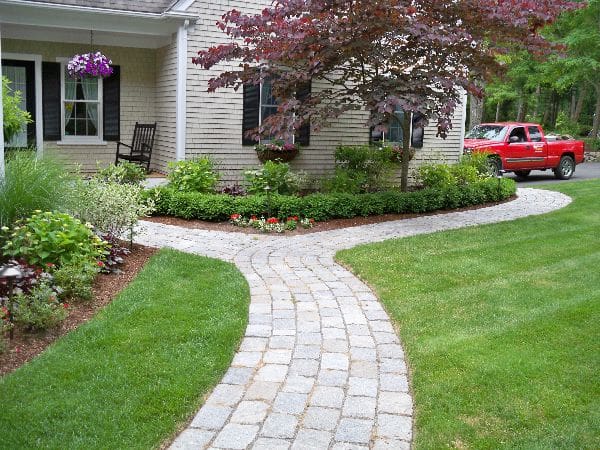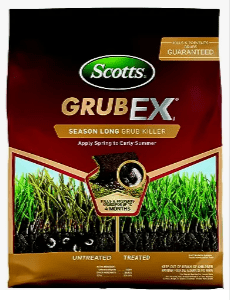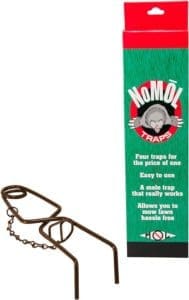Easy Do It Yourself Lawn & Grass Care For Southern Turf
Let me start by saying I am no expert landscaper, but I think my yard is pretty nice most of the time.. On a handful of occasions, a few of my neighbors /people just driving by have stopped me to ask what I do or what kind of grass I have. So, to help my fellow Shellpoint neighbors and the rest of us in the humid southern states I promised myself and my friends I would write out what it is I do. These steps should work for any yard in the South, Southeastern United States: SC, GA, NC, FL, AL, MS, TX, & LA. Essentially places where there is a lot of high humidity and temps over 90 F for at least three months.
few of my neighbors /people just driving by have stopped me to ask what I do or what kind of grass I have. So, to help my fellow Shellpoint neighbors and the rest of us in the humid southern states I promised myself and my friends I would write out what it is I do. These steps should work for any yard in the South, Southeastern United States: SC, GA, NC, FL, AL, MS, TX, & LA. Essentially places where there is a lot of high humidity and temps over 90 F for at least three months.
I live in Mount Pleasant SC a suburb of Charleston SC, and it took me about 6 years to figure it out and devise a system after having talked to a few landscape buddies and one very experienced Columbia SC landscaper, trial and error, etc.. I finally got it a few years ago. I didn’t know a thing about taking care of a lawn really because I had never had one until I built my house in 2006 so I was just winging it without a clue. As you can imagine it was a serious learning process of problems. Luckily, for the readers of this blog, I have made it a very simple step-by-step to a perfect lawn.
There are some things you’re just going to have to accept – It is work. There is no magic trick to a great yard, it requires a lot of attention. So if you’re not willing to do the work it will show. So if you don’t want to pay someone else to come out and treat your lawn, or you don’t know someone just bookmark this page, come back to it every spring and you’ll be the envy of all your friends and neighbors too.
You’re going to need a drop spreader to do this.

<—– A Drop spreader such as this one will work for most people. If you don’t want to use a drop spreader you can buy the pre-diluted bottles you hook up to hoses I guess as well, I like that the granules slowly dissolve into the soil.
THERE ARE 3 MAJOR THINGS THAT WILL MESS UP/KILL YOUR LAWN
1.) Fungus
(happens when the lawn stays too wet for too long). If you overwater your lawn this can happen. If it rains for days this can happen. If you have a lawn that can’t dry out because it’s low and too shady this can happen. To keep fungus from growing you must put down Lawn Fungicide. All the big box home & garden stores have bags of fungicide as well. Just use common sense if it poured rain the night before, or it has rained for 2 days (as it does in the south during the spring and hurricane season) don’t let your sprinkler come on. Go turn off your irrigation for a few days, and let the soil dry out. After maybe three or four days without water turn your sprinklers back on. I see this all too often with my neighbors. They just let their regular irrigation cycle stay on even though it rained all night. Only water when your lawn needs it.
Being able to identify it before it’s too late is key. You’ll start to see yellow blades of grass and brown spots starting. DO NOT WAIT!. Put down the fungicide immediately. It won’t hurt anything, and it’s better to spend $20 or $30 on a bag of granules than it is $5000 – $10,000 on resodding your lawn.
2.) Bugs & Grubs
mainly chinch bugs, (have killed my yard in the past) and armyworms which and that’s how I learned that lesson. Luckily, the bug and grub killer will take care of these. Don’t forget about the moles, because moles are also looking for the chinch bugs’ larvae and mole crickets which can  damage your yard. The Bug & Grub Killer will also keep the moles at bay because the moles are looking to eat the grubs in addition to worms. —– BUG & GRUB KILLER When it gets really really hot about the end of July and beginning of August is when the chinch bug grubs start to “grow up”, and if you haven’t killed them already through putting down bug and grub killer then you definitely want to put it down the end of July because they will begin to suck the water from the roots of the turf and that’s what kills the yard. (I had some dead spots in my lawn a couple of years ago and bought about 10 pieces of sod, when I was raking and prepping the dirt to put the sod down in I think April or May, every foot radius was a grub) I always put down a bag of bug and grub killer at the end of July or the first week of August, to be safe. It won’t hurt anything, but the cost of replacing your sod will cost $$ thousands. I like to put it down in the spring after I put down pre-emergent to kill whatever may be lurking, and then again, when I know for sure they hatch and come out. put down at least every 3 months minimum. The moles eat worms and grubs, so putting down the bug and grub killer keeps the insect “babies” (i.e. grubs) to a minimum and therefore there is much less food for the moles and they tend to go elsewhere in search of more food, but rest assured they will be back.
damage your yard. The Bug & Grub Killer will also keep the moles at bay because the moles are looking to eat the grubs in addition to worms. —– BUG & GRUB KILLER When it gets really really hot about the end of July and beginning of August is when the chinch bug grubs start to “grow up”, and if you haven’t killed them already through putting down bug and grub killer then you definitely want to put it down the end of July because they will begin to suck the water from the roots of the turf and that’s what kills the yard. (I had some dead spots in my lawn a couple of years ago and bought about 10 pieces of sod, when I was raking and prepping the dirt to put the sod down in I think April or May, every foot radius was a grub) I always put down a bag of bug and grub killer at the end of July or the first week of August, to be safe. It won’t hurt anything, but the cost of replacing your sod will cost $$ thousands. I like to put it down in the spring after I put down pre-emergent to kill whatever may be lurking, and then again, when I know for sure they hatch and come out. put down at least every 3 months minimum. The moles eat worms and grubs, so putting down the bug and grub killer keeps the insect “babies” (i.e. grubs) to a minimum and therefore there is much less food for the moles and they tend to go elsewhere in search of more food, but rest assured they will be back.
3.) MOLES
– We have A LOT of moles in Charleston and you probably know this already if you have lived here for any length of time and already own your house. If the bug and grub killer hasn’t pushed them out, then you can try these below, but I find that if I put down the bug and grub killer in the spring, the moles will stay away or be there very rarely for most of the summer, then I put it down again about June just to be safe that all the grubs are dead. This not only ensures there are no chinch bugs, but no grubs to attract moles. The moles will seek out worms as well, so if you have trees that are constantly dropping leaves that are decomposing into the soil that attracts worms which in turn attracts moles. So keep the leaves off the lawn. Literally while walking my son to school in the mornings the houses with the worst mole problems are the ones with oak trees that have leaves and acorns everywhere.
—- Mole Repellent: This is a granular (or liquid) application that has castor oil & peppermint which evidently (according to the bag) moles do not like so they go to someone else’s yard. It has done a good job for me and keeps them away for the first few weeks, but then they return or new ones find your yard, so I will put it down a second time a couple of weeks later. Remember you can’t necessarily ever “get rid” of moles, you can just keep them away for long periods. I personally just prefer to keep Bug and Grub killer down and it seems to be most effective.
 You need to come to terms with the fact you’ll never get rid of them completely. You may kill some with traps like NO Mole Traps (what I use), and one of my neighborhoods said he had GREAT success with the Garsum scissor traps, he said he got 6 moles one summer. However, keep in mind they are rodents and they breed quickly and spread fast so if you kill a few in your yard it will only be temporary until new ones find your yard (new territory) and take over usually in 6 months or so. Just for you to start over again. It is what it is. The best solution for this is I have found suggestions from others admittedly. All that junk they sell at Lowes and Home Depot doesn’t work, (the fake worms, food pellets, noise maker with the solar, none of it works so don’t waste your time or money). I have been there. The best thing is to put down bug & grub killer, & mole repellent.
You need to come to terms with the fact you’ll never get rid of them completely. You may kill some with traps like NO Mole Traps (what I use), and one of my neighborhoods said he had GREAT success with the Garsum scissor traps, he said he got 6 moles one summer. However, keep in mind they are rodents and they breed quickly and spread fast so if you kill a few in your yard it will only be temporary until new ones find your yard (new territory) and take over usually in 6 months or so. Just for you to start over again. It is what it is. The best solution for this is I have found suggestions from others admittedly. All that junk they sell at Lowes and Home Depot doesn’t work, (the fake worms, food pellets, noise maker with the solar, none of it works so don’t waste your time or money). I have been there. The best thing is to put down bug & grub killer, & mole repellent.
CHEMICALS & APPLICATION
Most people have one of 4 species (St Augustine [most popular], Bermuda, centipede, zoysia) and sadly my yard has 3 of them which are the most common and my process works for all of them. I have mostly St Augustine but have filled in dead spots with Centipede, Zosia, and the neighborhood had Bermuda already so it has also grown in.
—- About mid-February, you will want to put down “weed & feed” otherwise known as pre-emergent. You’ll know it’s time to put this down because you’ll start to see weeds popping up, and growing, (thistle, dollar weed, crabgrass etc). I do think Scotts Bonus S does work best and just follow the instructions on the bag. This kills or at minimum seriously inhibits the growth of weeds, as well as fertilizes the roots of the turf. The thicker the grass the more it kills off the weeds from ever-growing.
—- About 2 weeks after I have put down pre-emergent ‘Weed & Feed”, then if nothing else, for safe measure because it is so common, I put down a Lawn Fungicide because I don’t even want to roll the dice, so to me, it’s better to start off the spring with a clean slate. Not to mention the spring and beginning of summer is when we get so much rain that the lawn can stay too wet for too long so staying on top of the potential risk of fungus is key (see above about fungus again). Learn to recognize them when you’re walking around your yard so you’ll know when to put some down. Although the bag says it lasts for 3 months or whatever, I don’t trust it and won’t risk it. I know how hard it is to recover from it. It can quickly take over. I have been down that road with half my yard destroyed. So I keep a bag around at all times. It can easily be spread from the front yard to the back of the yard as well through your lawnmower and that’s why new mowers have a rinsing nozzle attachment on them so you can run water through your mower after cutting and get the fungus out so as not to spread it around from one side of the yard to the other. Fungus is going to also be more likely to start in the shaded areas where the grass gets less sun and can’t dry out adequately. Do not overwater your lawn. If your lawn looks bad, it likely isn’t because of lack of water, oftentimes that IS the problem. Too much water creates fungus. Your grass can easily go a few days without water even in the dog days of summer.
THE BEST WEED CONTROL
If you still need to spray for weeds but don’t want to kill your grass there are two products I use, and I have NO weeds at all in my lawn. Image is amazing, you can try other brands with the same ingredients but for me, this one has worked the most consistently. This stuff is kind of mind-blowing how it doesn’t kill your grass but does kill the weeds. Just follow the instructions but it’s pretty easy. The only thing is when to put it down. Pretty much any chemical that you put down with it is a 100 degrees, and you put too much will harm the roots.
- Image Weed Killer

2. Weed Free Zone. You can spray dollar weed and all weeds and it will kill it but not your grass (assuming you follow the directions). You would use this when you have a small spot you need to take care of and do not want to haul out the hose and spray the entire lawn. You just fill up a spray pump container with water and add the Weed Free Zone to it.. Then spray the weeds. It too works like Image does, it won’t will your grass but it will kill weeds, so I spray it in my mulch beds too where the weeds are.

IRRIGATION
- OPTIONAL – I like to de-thatch my grass as well in the spring. Thatch is last year’s growth that is interwoven together and is now dead. This dead grass will make a harder for new growth to “breakthrough” if you will. So to facilitate a healthy lawn, if you take a rake and semi-abrasively scratch out the old grass from last year this will open up dirt for the new shoots to pop through more easily and get sunlight & fresh air. As well as loosen up the topsoil for better growth. It’s not necessary really, but you will have a nicer yard if do this.
4.) My landscape friend at New Leaf Landscaping, Co. told me that it’s best to keep my lawn about an inch tall, cutting it too short can kill your lawn as well because it is too short and the heat will cook it up and kill it. Plus it looks much better if it’s lush and thick. Raise the mowing height of the lawn mower during summer months; a higher mowing height encourages root growth and reduces heat stress.
—– If you have irrigation this will help keep your yard pretty even with a mole problem (but you’ll still notice their tunnels). I know it sounds obvious, but when you do have moles the problem is that our stifling heat cooks up the grass roots the moles have pushed up with their tunnels, and the sun’s heat will dry up and kill the turf where they have been. However, if you keep the lawn regularly and properly irrigated the moisture keeps the roots from getting dry and dying. If your sprinkler system applies water at the rate of 2 inches per hour and you wish to apply 0.75 inches of water, then you would need to run your sprinklers for about 23 minutes.
sounds obvious, but when you do have moles the problem is that our stifling heat cooks up the grass roots the moles have pushed up with their tunnels, and the sun’s heat will dry up and kill the turf where they have been. However, if you keep the lawn regularly and properly irrigated the moisture keeps the roots from getting dry and dying. If your sprinkler system applies water at the rate of 2 inches per hour and you wish to apply 0.75 inches of water, then you would need to run your sprinklers for about 23 minutes.
If you follow these simple steps you’ll be good to go and be the envy of the neighborhood too I promise. Trust me, my other neighbors, my friends, and my family have been following my method and I have watched them save their yard even after it looked dead.
5) Humic Acid & Nutrient Aerator (CHEAT CODE!!)
This stuff is the secret “sauce” if you will… After you follow the directions above then spray this and your lawn will grow so fast, healthy, and thick that you’ll think it is magic. Soil Activator Nutrients – Aerify Plus. This stuff has humic acid in it. Another landscape “chemicals guy” told me about this magical stuff. Just to make it easier to understand, it essentially aerates your soil (without having to rent an aerator plug machine) when you have older compacted dirt. It loosens the soil (don’t ask me how it works) so your roots can grow deep into the soil more easily, thus protecting them and making your lawn more resilient against things that can kill it. Also, it allows it to grow much thicker, greener, and healthier. Here is a video to help understand. A lot of people as I understand it use it where there is a lot of clay since clay can get compacted easily, but high foot traffic areas would benefit also.
